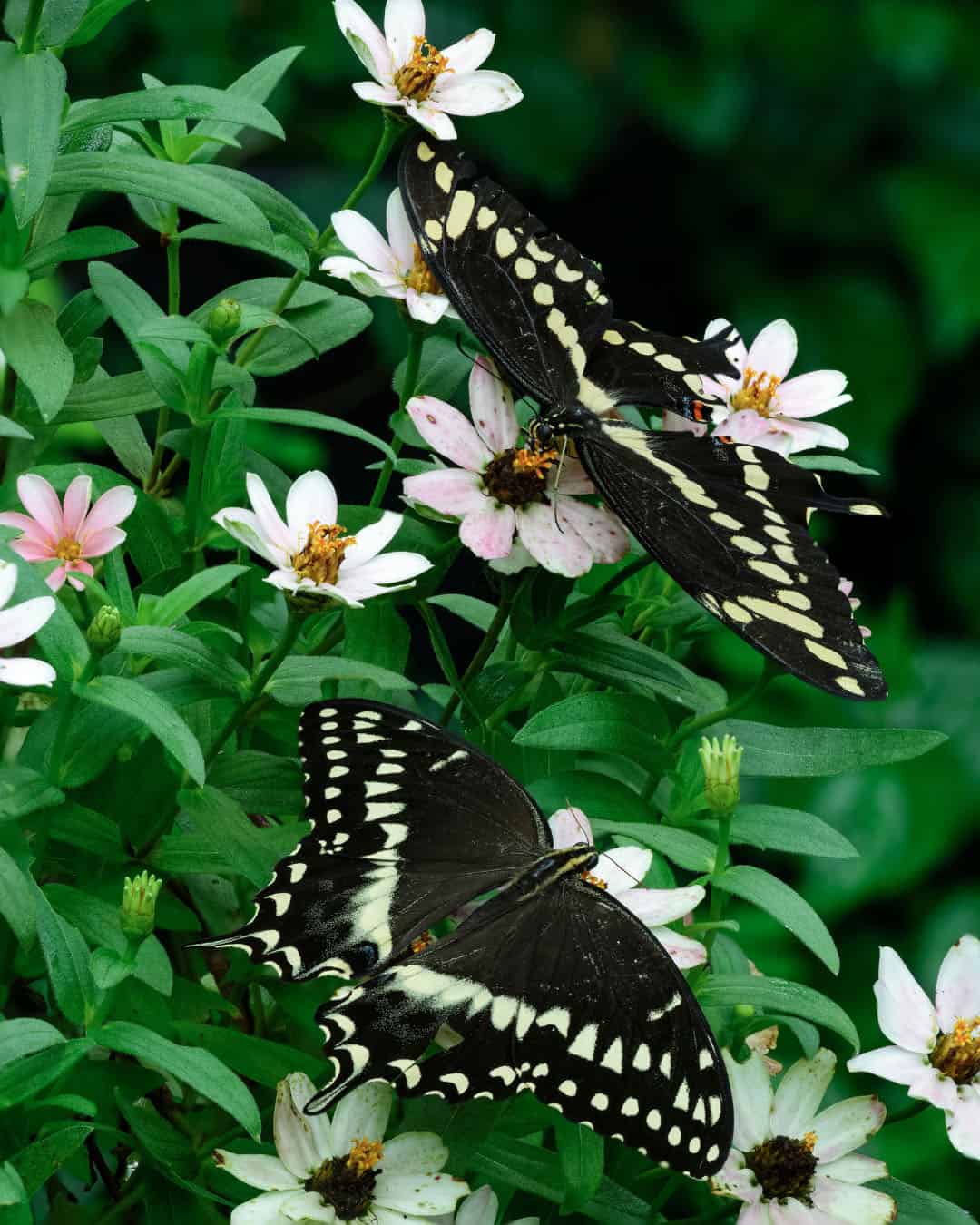Giant Swallowtail Facts & Information
Giant Swallowtail butterflies, known for their large size and striking black and yellow wings, are admired for their beauty and their role as pollinators. However, their larvae, commonly known as "orange dogs," can be a significant pest for citrus trees, causing considerable damage to foliage.

Papilio cresphontes
What You Need To Know About Giant Swallowtails
What do giant swallowtail butterflies look like?
Giant swallowtail butterflies are large and striking, with a wingspan ranging from 4 to 6 inches. They are predominantly black with yellow bands crossing their wings, and the hindwings feature distinctive tails that resemble those of a swallow. The undersides of the wings are yellow with blue and orange spots.
What do giant swallowtail butterflies eat?
Adult giant swallowtail butterflies feed on nectar from a variety of flowers, favoring those with strong scents and bright colors. As caterpillars, they primarily feed on the leaves of citrus trees and other plants in the Rutaceae family, earning them the nickname “orange dogs.”
What sort of habitat do giant swallowtail butterflies live in?
Giant swallowtail butterflies are commonly found in a range of habitats, including woodlands, gardens, orchards, and citrus groves. They prefer warm, temperate regions and are often seen in areas where their host plants are abundant.
How do giant swallowtail butterflies commonly behave?
Giant swallowtail butterflies are strong fliers and are often observed gliding gracefully through the air. They are diurnal and are most active during the day. The caterpillars are known for their unique defense mechanism, resembling bird droppings to deter predators.
Did you know this about giant swallowtail butterflies?
Giant swallowtail butterflies are the largest butterflies in North America. The caterpillars have a unique defense mechanism known as an osmeterium, a gland that, when threatened, emits a foul-smelling chemical to ward off predators. Additionally, these butterflies are important pollinators and play a crucial role in the ecosystems they inhabit.
Understanding Giant Swallowtail Infestations
Understanding Giant Swallowtail infestations is crucial for protecting citrus trees and maintaining healthy gardens. The larvae feed on the leaves of citrus trees and other plants, potentially defoliating young trees and stunting their growth. While adult butterflies are beneficial pollinators, their larvae can pose a challenge to gardeners and farmers.Giant Swallowtail butterflies do not pose direct health risks to humans, but their larvae can cause significant damage to citrus trees, leading to reduced fruit yield.Infestations can lead to defoliated citrus trees, which may weaken the trees and reduce their productivity.The Giant Swallowtail is the largest butterfly in North America, with a wingspan that can reach up to 6 inches, making it a striking sight in any garden.

How Hearts Handles Giant Swallowtail Treatment
Managing Giant Swallowtail infestations involves a combination of cultural, biological, and, when necessary, chemical controls. Encouraging natural predators, such as birds and parasitic wasps, can help control the larvae population. Handpicking larvae from trees can also be effective in small gardens. When necessary, targeted insecticides can be used to protect valuable citrus trees. Regular monitoring and early intervention are essential to prevent significant damage.
Giant Swallowtail Butterfly Inspection
Giant Swallowtail Butterfly Treatment
Giant Swallowtail Butterfly Prevention
Educational Resources

Think You Might Have a Giant Swallowtail Infestation?
At Hearts Pest Control, we understand the challenges associated with Giant Swallowtail infestations and are here to provide professional solutions tailored to your needs. Flourishing in warm and humid climates, they are prevalent in many regions, including San Diego County, Orange County, and Los Angeles County.